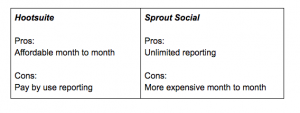— December 6, 2017

Shutterstock
We’ve reached the point in the year when marketers aren’t holding back on their outbound communications. I woke up on Black Friday to an absolute deluge of emails from essentially any retailer I’ve ever had any interaction with (or not), informing me of their incredible sales and promotions. Those emails continued into the rest of the day, the rest of the weekend and into this week as well. I feel as though I have never received so many emails in my life. I’m sure I’m not alone in this feeling.
Recently, The Wall Street Journal published an article entitled “Retailers’ Emails Are Misfires for Many Holiday Shoppers.” In the article, Suzanne Kapner outlines the problem clearly: retailers are sending too many emails and consumers are frustrated. In fact, according to Yes Lifecycle Marketing, as cited in the article, the number of retail emails sent last year was 15% higher than the rest of the year, yet consumers opened 15% fewer of them.
While the article is definitely worth a read, the comment section is equally enlightening. One commenter summed up the pain many consumers are feeling when he said: “In general, retailers send way too many emails, creating inbox clutter, as though they think that The Container Store or Cost Plus World Market…is the center of my universe and that the highlight of my day is getting a message from them.”
Another commenter hit home with me when she said: “Many retailers have emails regarding sales, then follow-up with “don’t forget our sale” e-mails, followed by “it’s not too late to save” and “just hours left” messages. It has become just so much junk to manage.”
What’s the Problem?
I understand why marketers feel like they need to send so many emails. This is a critical time of year for them. They have been planning their campaigns for months and they want to ensure that everyone is aware of their ongoing promotions. But, unfortunately, it’s clear that marketers are sending emails with their own businesses in mind — rather than their customers’ real interests. As a result, consumers are experiencing “email overload.”
Yet surprisingly, we found in our annual study that email is the most personalized channel. So why are consumers still dissatisfied? According to Brendan Witcher, principal analyst at Forrester Research, as quoted in the WSJ article, “Nearly 90% of organizations say they are focused on personalizing customer experiences, yet only 40% of shoppers say that information they get from retailers is relevant to their tastes and interests. The ugly truth is that most retailers haven’t done the unsexy work of understanding how to use the data.”
What’s the Solution?
If consumers feel that marketers are sending too many emails, the solution is obvious: send fewer emails. Of course, that may be a terrifying prospect for marketers, particularly during the holidays. But frustrating your customers with a mountain of emails is not the way to provide a winning customer experience. The key to sending fewer emails is to send better emails. And by better, I mean personalized to the individual.
There are two key facets of personalized emails.
Triggered emails allow you to time your emails appropriately. You can opt to trigger emails based on any factor you choose, from a person’s behavior (such as cart abandonment or time spent in a particularly product category) or lack of behavior (such as a person that hasn’t visited the site in X weeks) or even external factors (such as the weather or inventory changes). By triggering an email to send based on certain criteria, you can limit the number of emails you send and ensure that your message is much more relevant to a person than a batch and blast email can be.
Of course, the timing of an email is not enough to ensure that your message is truly relevant. For that, you need to send emails personalized at open time. The ability to personalize the content of the email, including product or content recommendations, that takes into consideration each individual’s unique preferences and affinities is critical to the ability to send fewer, more targeted emails. But the personalization of that content should take place at open time (versus send time), based on the person’s most recent, up-to-the-moment actions (e.g. site visit, app usage, or email clicks) so that it is maximally relevant.
Let’s explore a quick example of a triggered, open-time personalized email. A retailer can send a triggered email to a person who was highly engaged with a product on its site, but left before adding it to her cart. The email can remind her of the product and include several other product recommendations that demonstrate an understanding of the brands, categories, price ranges and colors she prefers.
But if she buys any of the products promoted in the email before she opens it (which is certainly possible, particularly during the holidays where shoppers may want to explore other options before committing to a gift for a loved one), those products can be updated with other equally relevant product recommendations the second she opens the email. Or, if the price on any of those products has changed (which is also likely during the holidays considering most retailers have many different promotions running at any given time), the price displayed can be adjusted when the email is opened. With this approach, the shopper will be less likely to become annoyed or frustrated by the email content, as it will be as current and relevant as possible.
Final Thoughts
As the article in the WSJ last week indicated, it is during the holiday season when we see consumers hit their breaking point with email frustration. I certainly felt it this Cyber Week. Most of the emails I received were not relevant to me personally — even if I have been a loyal customer of the business for years.
But it doesn’t have to be this way. With triggered email and open-time personalized email, marketers can tailor their communication and avoid annoying their customers. We cover the concept of communicating with individuals in email and other channels in our new full-length book, One-to-One Personalization in the Age of Machine Learning, which has already been described as “a down-to-earth, eminently practical how-to guide” by industry luminaries Don Peppers and Martha Rogers, Ph.D. Download it for free today!
Digital & Social Articles on Business 2 Community
(74)





